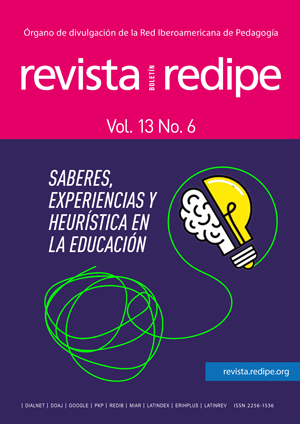Graphical expression in engineering and project based learning: Designing a Cansat
Main Article Content
Keywords
PBL, Engineering projects, Graphic expresión, Design, Satellite
Abstract
The project-based learning (PBL) method has been applied at different educational stages for a long time, but it is now becoming more relevant due to the high level of motivation it achieves in the student who experiences it. When it comes to perpetuating a paradigm shift in the way education is conceived, there is a perceived lack of research and projects in the teaching field. The most important factor of the PBL method is that the learner learns autonomously once he/she has the minimum knowledge to manage without help, so that learners acquire knowledge and motivation with the help of their peers. The aim of this research is to present the Cansat project developed by 5 students in the 1st year of the technological baccalaureate. This project is part of the educational competition organised by the Spanish Delegation of the Educational Resources Office of the European Space Agency (ESERO SPAIN). Through the project methodology, students achieve important results, such as improvement in their academic training, autonomy, ability to work in groups and problem solving in their environment.
References
CANSAT, (2024). Cansat2024. El desafío. Disponible en: https://esero.es/cansat-2/
Cárcel, FJ. (2016). El método de proyectos como técnica de aprendizaje en la empresa. 3C Empresa, Investigación y pensamiento crítico. Repositorio Institucional UPV. 5(1):16-28. http://dx.doi.org/10.17993/3 cemp.2016.050125.16-28
Clares, J. F., y Alarcón, M. (2021). Estudio de los contenidos en energía y su relación con los estándares de aprendizaje en la materia de Tecnología de la ESO. Actas Congreso, 11. Disponible en: http://hdl. handle.net/10201/113028
DíazI, J. M. M., y González, M. (2012). El método de proyectos, su aplicación en la disciplina Informática Médica. 30(3), 3–4.
Eggen, P.D., Kauchak, D.P. (2001). Estrategias docentes. Enseñanza de contenidos curriculares y desarrollo de habilidades de pensamiento. Fondo de cultura Económica. México, 2001.
ESERO, (2024). Oficina Europea de Recursos para la Educación Espacial en España. Disponible en: https://esero.es/
Hosic y Chase (1944). Brief guide to the Project Method. New York.
Karlin, M., Viani, N. (2001): Project-based learning. Medford, OR: Jackson Education Service District.
Katz, L. G. (2010). STEM in the Early Years Some Distinctions between Academic and Intellectual Goals for Young. Early Childhood Research and Practice, Collected Papers from the SEED (STEM in Early Education and Development) Conference, 2–7.
Knoll, M. (1997). The project method: its vocational education origin and international development. Journal of Industrial Teacher Education, 34 (3), 59- 80.
López de Sosoaga, A, & Ugalde G, A. I., & Rodríguez, P., & Rico, A., (2015). La enseñanza por proyectos: una metodología necesaria para los futuros docentes. Opción, 31(1),395- 413.
Mayer, R.E. (2002). Psicología de la Educación. El aprendizaje de las áreas de conocimiento. Pearson Educación, S.A. Madrid. 2002.
Moreno, R. De, Amanda, E., Rodríguez, C., Lache, M., & Cristobal, S. (2006). Geoenseñanza. Universidad de los Andes Venezuela.
Pozuelos, F. J., y Rodríguez, F. de P. (2008). Trabajando por proyecto en el aula. Aportaciones de una investigación colaborativa. Investigación En La Escuela, 66, 5–27. Disponible en: http:// www.investigacionenlaescuela.es/ articulos/66/R-66_1.pdf
Ricoy, J. (2018). Desmotivación del alumnado de secundaria en la materia de matemáticas Demotivation in Mathematics among High School Secondary. Revista Electrónica de Investigación Educativa, 20(3), 69–79. https://doi.org/10.24320/ redie.2018.20.3.1650
Rodríguez, M. R. (2014). El método del proyecto en los estudios de grado en Comunicación Audiovisual. El Festival de Cortos AdN como ejemplo aglutinador de competencias. Historia y comunicación social, 19, 779–790. https://doi.org/10.5209/rev_HICS.2014. v19.45065
Rojas, M. (2010). Aprendizaje basado en proyectos: una experiencia de innovación docente. Universidad EAFIT, 46,158. Recuperado de: https:// publicaciones.eafit.edu.co/index. php/revista-universidad-eafit/article/ view/743
Tippelt, R., y Lindemann, H. (2001). Método Proyectos. Ministerio de Educación, 1(2), 1–14.
Tobón, S. (2006). Método de trabajo por proyectos. Madrid: Uninet.
Tünnermann, C. (2011). El constructivismo y el aprendizaje de los estudiantes. Universidades, 48, 21–32. https://www.redalyc.org/articulo. oa?id=37319199005



